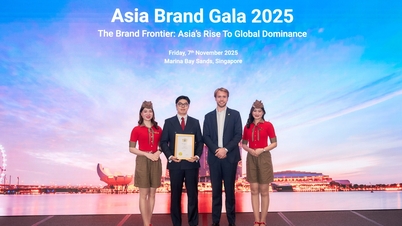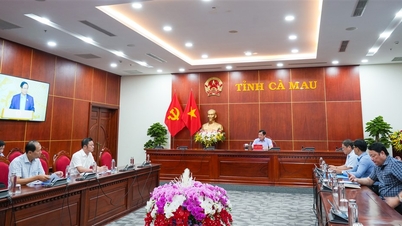
"Green buildings" - new trend of modern urban development
In the context of climate change and rapid urbanization, "green buildings" have become an inevitable solution towards sustainable real estate development. This is a model of construction designed, constructed and operated to minimize negative impacts on the environment and human health, while optimizing the use of energy, water, materials and natural resources. This model not only helps reduce operating costs, improve the quality of life but also increases the value of assets for investors and users.
Green building development requires compliance with core criteria including:
Green buildings start from sustainable and smart planning thinking to ensure infrastructure, transportation and landscape are in harmony with nature. Reasonable planning helps reduce the heat island effect, maintain a cool climate and save operating energy.
Energy efficiency is at the heart of any green city. The use of renewable energy sources such as solar power, combined with designs that take advantage of natural light and ventilation, helps reduce emissions and operating costs.
Efficient water use: The wastewater treatment system uses advanced technology. Treated water can be reused, contributing to saving resources.
Using environmentally friendly materials, green buildings need to seriously commit to the Materials & Resources criteria - using environmentally friendly and energy-saving materials, protecting residents' health.
Air quality is a measure of a healthy urban environment, and green buildings need to meet Indoor Environmental Quality criteria – where the indoor and outdoor living environment meets healthy and safe standards. Trees, parks, and vegetation create “natural filters”, absorbing CO₂ and reducing dust, while a closed waste collection system keeps the environment clean and safe.
Transportation and community amenities encourage an active lifestyle, convenient transportation, easy connection to key routes, adjacent to administrative and commercial centers and existing residential areas.
Finally, smart management and operation help the project maintain long-term sustainability. Applying technology to monitor energy, water, waste and security helps optimize costs and prolong the life of the project.
There are currently three popular green building certification systems in the world : LEED (USA) - a strict global standard for energy, material and operational efficiency; EDGE (IFC - World Bank) - focusing on saving energy, water and materials, suitable for developing countries; LOTUS (VGBC - Vietnam) - developed by the Vietnam Green Building Council, reflecting the specific climate and infrastructure in the country, encouraging businesses to move towards sustainable development.
Developing green buildings brings sustainable competitive advantages to real estate businesses. Projects that meet green criteria often score high in international ESG assessments such as GRESB, thereby enhancing brand reputation and expanding access to green investment capital. In addition, green buildings increase product liquidity, meeting the increasing needs of buyers for living environment and health. With low operating costs, high durability and stable asset value, this is considered a long-term investment direction for both businesses and consumers. In the high-end, smart urban or resort segments, this model creates a clear difference in the market, demonstrating the long-term vision of investors and in line with the national strategy on green growth.
In the world, the green urban model has been successfully applied by many countries such as Masdar City (UAE); Songdo (Korea); Dockside Green (Canada),...

Songdo Urban Area (Korea) dedicates up to 40% of its area to green space.
These examples show that "green buildings" are not only a trend, but have become the standard for modern urban development, balancing economic growth, environmental protection and human quality of life.
Urban development trends according to green building criteria in Vietnam
At the COP 26 conference (Conference of Parties to the United Nations Framework Convention on Climate Change), Prime Minister Pham Minh Chinh affirmed that "Vietnam will take strong measures to achieve net zero emissions by 2050". Following this commitment, the government has continuously issued many policies to encourage the use of renewable energy, environmentally friendly materials and energy-saving technology in construction.
According to statistics from the Vietnam Green Building Council (VGBC), by 2025, the country will have more than 300 projects achieving or registering for green building certification according to international standards such as LEED, EDGE, LOTUS. This number is double that of the 2020-2022 period, reflecting a clear shift in investment thinking and urban planning.
Many real estate projects in Vietnam have pioneered the application of green urban models in the fields of housing, offices and urban complexes such as Deutsches Haus (HCMC) is the first Class A building to achieve LEED Platinum certification, Capital Place (Hanoi) achieved LEED Gold. In the urban area group, Gamuda City (Hanoi) and Ecogreen Saigon stand out with their planning of many trees, regulating lakes and technical infrastructure supporting water reuse, aiming for sustainable and environmentally friendly operation.
Notably, some urban areas developed by Eurowindow Holding meet green building criteria such as the super high-end urban area Eurowindow Sport Garden, the high-end urban area Eurowindow Central Avenue in the center (Vinh City) of Nghe An province. These projects are all planned with large green areas, using environmentally friendly and energy-saving materials such as Eurowindow glass doors combined with safety glass and Low-E heat-insulating glass - a material that can block up to 96% of UV rays and reduce about 40% of heat absorption and energy-saving technology in the entire area; using renewable energy solar power; applying wastewater treatment technology that meets A standards; smart waste collection system operated by solar energy, automatically opening and closing, automatically reporting full to the central system, helping to collect waste quickly.

Eurowindow Sport Garden super luxury urban area owns 7 parks, flower gardens and multi-layered vegetation, the trees in the urban area are big, tall, and have wide canopies.
Experts say that developing green buildings is not only a trendy choice, but is gradually becoming a mandatory standard in the real estate industry. Projects that meet green and sustainable criteria will have a long-term competitive advantage, easy access to investment capital sources and at the same time meet the increasing demand of buyers for a quality living environment.
Source: Cafef.vn
Source: https://eurowindow-holding.com/green-trends-in-urban-areas-in-viet-nam


![[Photo] Chu Noodles - the essence of rice and sunshine](https://vphoto.vietnam.vn/thumb/1200x675/vietnam/resource/IMAGE/2025/11/11/1762846220477_ndo_tl_7-jpg.webp)




![[Photo] Prime Minister Pham Minh Chinh chairs a meeting on housing policy and the real estate market.](https://vphoto.vietnam.vn/thumb/1200x675/vietnam/resource/IMAGE/2025/11/11/1762838719858_dsc-2107-jpg.webp)
















































































![Dong Nai OCOP transformation: [Article 4] Reaching national standard products](https://vphoto.vietnam.vn/thumb/402x226/vietnam/resource/IMAGE/2025/11/11/1762825820379_4702-cac-san-pham-trai-cay-chung-nhan-ocop-nongnghiep-174649.jpeg)



![Dong Nai OCOP transition: [Article 3] Linking tourism with OCOP product consumption](https://vphoto.vietnam.vn/thumb/402x226/vietnam/resource/IMAGE/2025/11/10/1762739199309_1324-2740-7_n-162543_981.jpeg)






Comment (0)